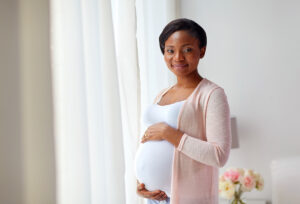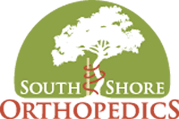
Pregnancy is a remarkable journey that brings about numerous changes in a woman’s body, both internally and externally. As the body adapts to accommodate the growing fetus, various systems transform to ensure a safe and healthy pregnancy. Among the many aspects that require attention during this period, orthopedic considerations play a crucial role in maintaining the well-being of both the mother and the developing baby.
This can also come with questions regarding your orthopedic health, even as you read through the potential things to consider. Our team at South Shore Orthopedics is here to help!
Changes To The Musculoskeletal System
The musculoskeletal system encounters significant alterations during pregnancy, comprising bones, joints, ligaments, and muscles. Hormonal changes, primarily the relaxin and estrogen levels surge, lead to increased ligament laxity.
While this physiological adaptation is essential to facilitate childbirth, it can also contribute to joint instability and potential orthopedic issues. Due to these hormonal changes, women might experience a heightened risk of sprains, strains, and dislocations.
The Growing Fetus
The increased weight and altered posture resulting from the growing fetus place additional stress on the spine and lower extremities. As the abdomen expands, the body’s center of gravity shifts forward, potentially leading to an exaggerated lumbar lordosis (swayback) and an increased risk of lower back pain.
This discomfort, often called “pregnancy-related low back pain,” affects many pregnant women. Orthopedic care in such cases involves addressing posture adjustments, strengthening exercises, and providing ergonomic advice to minimize pain and discomfort.
Understanding Pelvic Girdle Pain
Pelvic girdle pain, another common orthopedic consideration during pregnancy, occurs due to the relaxation of pelvic ligaments in preparation for childbirth. This condition can lead to pain in the pubic symphysis or sacroiliac joints, impacting a woman’s mobility and quality of life. Orthopedic interventions like physical therapy, specialized exercises, and supportive belts can relieve and enhance pelvic stability.
Staying Active
Maintaining an active lifestyle during pregnancy is essential, but care must be taken to engage in appropriate exercises. Low-impact activities like swimming, walking, and prenatal yoga can help alleviate musculoskeletal discomfort while promoting cardiovascular health. However, high-impact exercises involving sudden movements should be avoided to prevent orthopedic injuries.
Noticing How You Sleep
Sleeping positions also require attention. As the pregnancy progresses, lying on the back can cause the uterus to compress major blood vessels, potentially reducing blood flow to both the mother and the fetus. Sleeping on the left side is generally recommended to improve circulation and alleviate pressure on the spine and pelvis. Placing a pillow between the knees and under the abdomen can further provide comfort and support.
Maintaining Nutrition
Nutrition plays an integral role in orthopedic health during pregnancy. Adequate intake of calcium, vitamin D, and other essential nutrients supports bone health and minimizes the risk of conditions like osteoporosis. These nutrients are crucial not only for the mother but also for the developing baby’s skeletal development.
Staying On Top Of Preexisting Conditions
Preexisting orthopedic conditions may require special attention during pregnancy. Women with scoliosis, herniated discs, or joint disorders should consult their orthopedic specialists and obstetricians to develop a comprehensive care plan that ensures a safe and comfortable pregnancy.
Medications, imaging procedures, and other interventions may need to be modified or avoided to protect the well-being of both the mother and the baby.
Consider A Consultation With South Shore Orthopedics
Orthopedic considerations are a vital aspect of prenatal care that should not be overlooked. The dynamic changes in a pregnant woman’s body, driven by hormonal fluctuations and the physical demands of gestation, can impact the musculoskeletal system in various ways.
While our work does not focus solely on the musculoskeletal system of pregnant women, the importance of understanding the orthopedic changes remains. Are you interested in learning more? Check out our website to find ways to request an appointment and more about our team.
